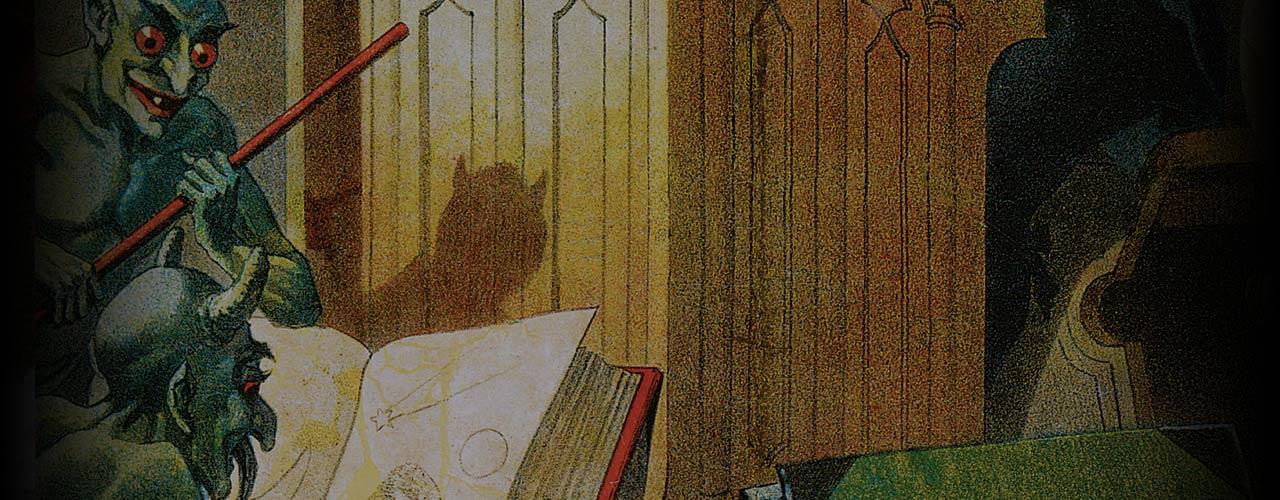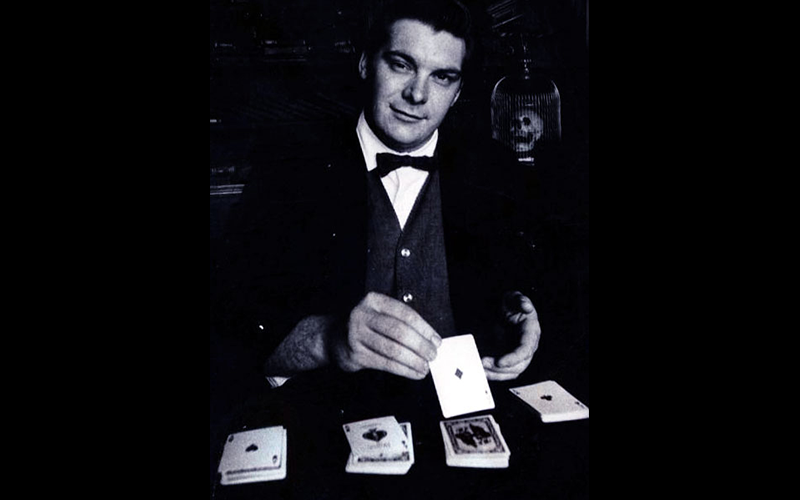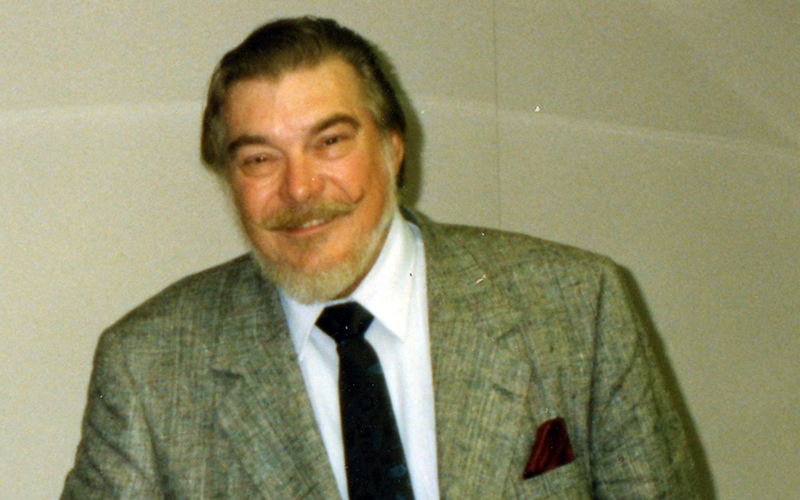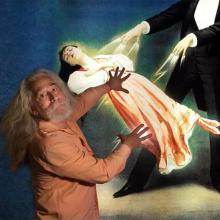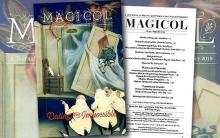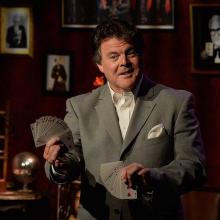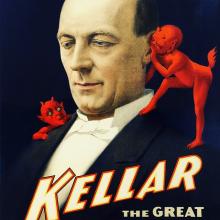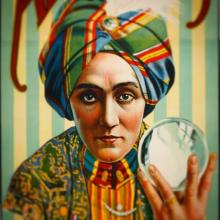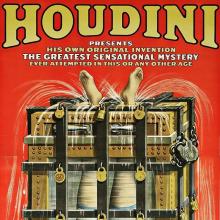Submitted by Jamy Ian Swiss on
Photos courtesy of larryjennings.com and the David Ben Collection
Larry Jennings
When Dai Vernon left New York City and moved to Los Angeles in 1963 to become the resident guru at the newly created Magic Castle, the then center of the conjuring universe took the cross-country ride along with him. And Vernon, approaching his 70s, entered a new and productive stage in his life—that of teacher and mentor.
In short order, two men relocated to LA from their native homes to study with Vernon: Bruce Cervon from Ohio, and Larry Jennings from Michigan. Cervon and Jennings would become two of the best known of Vernon’s Los Angeles acolytes. Both would live out their lives in LA, steeped in magic in the artistic community of the Castle, and in Vernon’s influence and guidance until his final days, and beyond.
You can see a single clip of Cervon in my first installment of Take Two, which was dedicated to a single magical illusion, the Torn & Restored Cigarette Paper. And no doubt, there will be a future Take Two devoted to Cervon’s work. This installment, however, is devoted to his friend and colleague Larry Jennings.
The two men were very different characters, both passionately devoted to sleight-of-hand magic, and to Vernon and his work. Cervon would become a successful professional entertainer, while Jennings remained a dedicated amateur throughout his life. Both would win awards from the Academy of Magical Arts; both would publish multiple books and release videos that would have significant impacts on the world of sleight-of-hand magic.
Vernon would notoriously challenge the two with “card problems” and other missions, to stimulate their creativity and problem-solving abilities. Decades later it became apparent that Vernon would deliberately set the two off against one another—offering mixed compliments that often went something like: “That’s very good, Larry, but Bruce has come up with something else, particularly clever,” ... or vice versa! And each, in their frustrated and challenged state, would go back to the drawing board—or the close-up pad and practice mirrors in their case—and continue working on solutions. In this way, Vernon taught not only his own thinking, but also one of his most fundamental beliefs: That perfection was always worth striving for, but was never to be achieved. There may be have been a touch of perverse pleasure in Vernon’s strategy, and yes, it created tension between the two friends, but they both took their lessons and applied it to their own body of creative work.
In most of Vernon’s closest acolytes one can see different aspects of his influence come to the fore. Vernon’s role as an “orchestrator” for example, is best seen in Michael Skinner’s work. Vernon’s approach as a commercial performer focused on clarity of effect is evident in Cervon’s output. And the master’s exploration as a technical innovator is echoed in Jennings’ contributions.
As the dedicated amateur, Jennings could devote himself to, and indulge himself in, the pure pursuit of ideas, always trying to innovate—sometimes for better, sometimes for worse—without concern for whether the results would be commercial or not. Sam Sharpe, in his classic theoretical text Neo-Magic identified this important role of the innovative, and often amateur, artist—one who can provide invaluable R&D contributions to the art. The originator’s output needn’t always be great; it is enough to simply innovate and let others be the judge. And while such innovators reflect only a very tiny portion of the large pool of amateur enthusiasts, they serve an important role in moving the art forward. Meanwhile, it is up to professionals to discriminate amidst that output, and judge good from bad, eventually serving to bring the former to the attention of the larger community. The routines and methods that professionals choose to refine and put in to commercial use, in turn, inform the larger magic community’s tastes and awareness of what is good and useful, and in this way serve to popularize elements of the amateur’s creations. In sum, it is often the case: Amateurs create; professionals select.
Larry Jennings was just such an amateur. He may not have been an electrifying entertainer, but in the intimate conditions of his home turf at the Magic Castle, he could be quite effective. And late in life, as is often the case, he eventually grew into his own character—that of benevolent elder statesman and avuncular favorite uncle—and it is in that role that we see him at his most charming and appealing as a performer.
But even though Jennings couldn’t always tell the difference between treasure and trash, many of the treasures were lasting gems, and ones that magicians still value and use today, including both neo-classic close-up plots, raw sleight-of-hand technique, and innovative, artistic thinking.
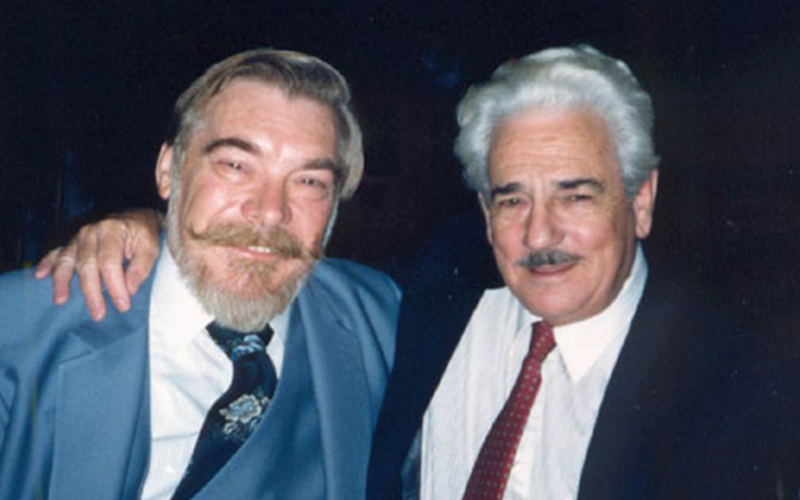
Jennings hailed from Detroit and got involved with magic in his teens. After a stint in the Navy, he married (for the first of three times) and moved to Windsor, Ontario, where he met Scottish magician Ron Wilson, who like Jennings, would eventually become an accomplished stalwart of the Magic Castle. It was Wilson who introduced Jennings to the more serious world of magic. In 1961 Jennings met Cervon for the first time at the Columbus Magi-Fest convention. Cervon would relocate to Los Angeles in 1963, and Jennings followed in 1964.
I first came across Jennings’ work by reading his published material in the Seventies. I then met him in the early Eighties at the New York Magic Symposium, where I also saw him lecture. In 1986, when his biggest book, The Classic Magic of Larry Jennings by Mike Maxwell, was published, I was Magic Bartender at the Inn of Magic in the Maryland suburbs of Washington, DC. I worked through his book, putting many of the routines before the public’s eye night after night. Over the years there were a number of controversies over items in the Jennings oeuvre that should have been credited to others—some outright pilfering, while others, perhaps, by way of honest error. But despite that fact, the irony was that Jennings had more than enough—more than most!—for which to take legitimate credit, and that will carry his name, deservedly, through the annals of sleight of hand for many years to come.
I encountered Jennings many times at the Magic Castle, the 4F convention, and elsewhere. We were not close, and the few times when we did talk magic, it was clear our tastes were different. But I always admired his ingenuity, as well as his incredible technical skills. He was truly one of the best card technicians I have ever seen.
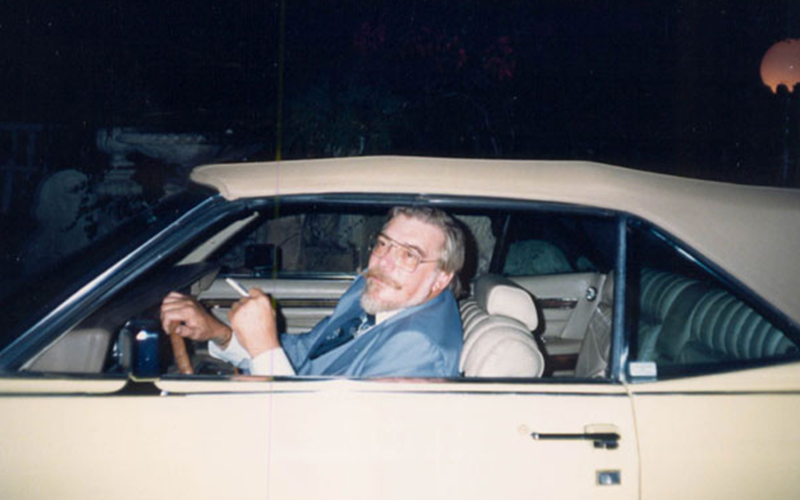
Jennings could fool the hell out of me. I recall him demolishing me one night at the Magic Castle with his Card to Lime. He could also knock me breathless with sheer technique: I remember when I was standing by his side in the Castle one night, at the foot of the main staircase, watching him perform for some laymen. At one point he had a card selected and returned to the pack, then handed the deck out for shuffling. I was amazed at the cleanliness of the moment, and tried to deduce what must have gone by me—entirely by way of logic and expertise, but not because of anything actually seen. When the deck was returned to Jennings and the performance continued, I was finally able to detect something that confirmed my analysis, but I was all the more impressed with what he had accomplished—invisibly and effortlessly—with such casual mastery. Put simply: Larry Jennings had monster chops.
Jennings had a tremendous impact on the world of sleight-of-hand close-up magic, which lasts today, more than twenty years after his death in 1997 at the age of only 64. Further details of his life and works, including a remarkable lengthy and detailed bibliography created by his friend and acolyte Bill Goodwin, can be found here: www.larryjennings.com.
I hope you enjoy the performance pieces that follow. Please give the work and the artist the attention they warrant. Expand the browser, turn up the volume, put the smart phone aside, and enjoy the magic of Larry Jennings, a great and genuine amateur—one who does something for the pure love of it.
Larry Jennings | The Cup & Balls
This routine has always been of interest to me, an artistic exercise conceived with a purist’s idea of beginning and ending with nothing. There is some terrific thinking and construction here, and some stellar sleight of hand. (Some elements of the use of the handkerchief were left un-credited to the great underground magic creator Bob Stencel.)
Larry Jennings | Slow Motion Aces
While the plot of the Ace Assembly has been around for a very long time, it was Dai Vernon who originated the “slow motion” approach, in which the vanish and arrival of each Ace is witnessed by the audience. Since the publication of Vernon’s plot in Stars of Magic, there have been countless variations, and here is one devised and performed by Larry Jennings.
Larry Jennings | Open Travellers
Here is another routine clearly born of a high concept question: could the classic Ace Assembly be performed with just four Aces and without the usual twelve additional cards? The answer is one of the most famous routines associated with Jennings, even though there remains some debate whether it was Jennings or Cervon who first originated this approach. It seems likely that this handling, which is generally regarded as definitive, belonged to Jennings.
Larry Jennings | Card Up Spectator’s Sleeve
I’m fond of this quickie for two reasons: One, I love the appealing idea of the plot. And two, because of a lovely memory—I distinctly recall being at the Magic Castle one night when Larry came up to me and said, “Do you want to see something new? I just came up with this recently.” And then he performed it for me!
Larry Jennings | Another Cup & Ball
And finally, as a reminder that magic is an interpretive art, here is an entirely different approach by Jennings to the single cup-and-ball routine. It is another excellent piece of magical thinking and construction.
SEE TAKE TWO INDEX

